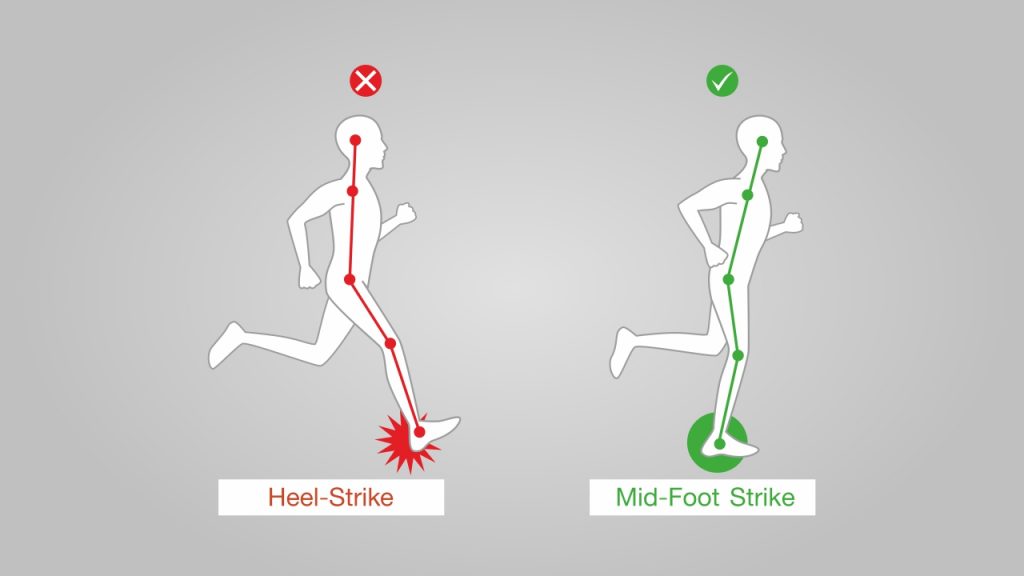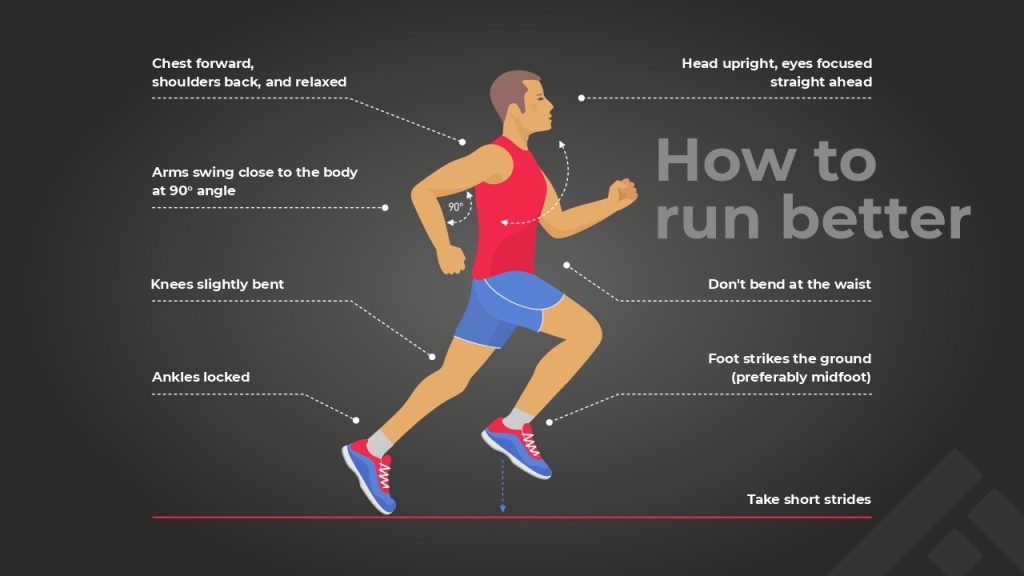
How to Improve Your Running Form

Watch ‘Funny Running Styles’ on YouTube and you will laugh out loud. Watch it again and you will know whether you are a Backward Leaner, a Duck, or a Flappy Legs. If you are serious about running and want to be a more efficient runner, it’s important that you pay attention to your posture or running form. This is easier said than done. Proper running form is not about knowing how to position your arms, head, or hips. It is about building core strength, increasing your mobility and flexibility, and to a smaller extent, your proprioception (or your spatial awareness when running).
What leads to bad running form?
1. If you have weak gluteal muscles and tight hip flexors, quadriceps, and hamstrings, you are likely to have poor running form
2. Tight hamstrings reduce flexibility and limit the range of motion in your stride
3. A weak core can cause the upper body posture to wilt. Weak abdominal as well as lower / upper back muscles which comprise the muscles of the core will cause the upper body to wilt and collapse preventing an upright posture.
4. If you don’t look straight ahead or if your head is not in line with your body, it can lead to your neck being out of alignment with your spine, resulting in incorrect posture and neck pain.
5. Keeping your shoulder tight or tensed will affect your running. They should be relaxed and pulled back as being hunched over will impact your speed negatively.
6. Squeezing your hands and fists will result in loss of energy. Your arms should not cross the body or swing excessively while running. Positioning your elbows outward and away from the body will affect your speed and momentum.
Why is it necessary to have good form?
If you strike the foot in front of your hips for instance, instead of under, it can result in a shock wave up your lower kinetic chain (the effect joints and segments have on each other during movement). It can also bring a “braking effect (akin to application of brakes)” thus slowing your momentum. You can avoid this with proper form. Altering your form can make you a more efficient runner — that is, you will expend less energy with each stride and reduce injury risks.

How do you know your form is correct?
Make a video of your running form, from the front, back and side, and get an analysis done by an experienced coach. Or, pay heed to the following guidelines (and the picture above) on good running form.
Proper running form for the recreational runner

As a recreational runner, good form will improve your gait and running economy. You will feel more at ease during long runs. To improve form, make your glutes, hips and hamstrings strong. How you lift your knee, swing your leg, or strike your foot on the ground, depends on how well you engage your glutes, hips, and hamstrings.
Also read: How Often Should You Run As a Beginner?
Tips to improve running form
Head
Look ahead or gaze forward, not down at your feet.
Your chin should not point up or down. Keep it straight.
Looking about 30m ahead and at the ground will meet the above requirements.
Shoulders
Shoulders should be pulled back, but relaxed.
When you take a stride with your right leg, your left shoulder should move forward and the right should move back.
Avoid shrugging your shoulders. When you shrug, stop, relax your shoulders, and drop your hands down. Then position your arms correctly and continue your run.
Arms
The arms help propel the body. Hence, it is important that you form a right angle at the elbow, curl your fingers of each hand lightly and swing them from chin to hip.
Your hands should be relaxed. Pretend that you are holding a leaf between your fingers; this will help you to avoid squeezing your fingers.
Do not cross your arms across the body; keep them in line with your forward movement.
Torso
Keep your torso, which includes the abdomen and the back, firm. Core strength is necessary to enhance the stability of your torso.
Remember, the torso helps you stay upright and run tall.
Hips
It is important to have a slight forward lean when running.
This means your torso should be slightly forward from the hips.
This allows gluteus muscles to fire and produce maximum power during the stride.
The hips should be directly above the foot when it lands and moves to midstance.
Knee
The knee should be used to drive the body forward.
It should be in front of the hips to drive force and in line with the forward movement of the body.
Foot
There are three ways to land when you hit the ground — forefoot, midfoot and heel strike.
The heel strike, while not entirely wrong, may make you land ahead of your hips, thus causing a braking effect.
The forefoot and midfoot strike allow you to land with your foot under your hips and propel forward with more force.
Your running gait depends on your musculoskeletal anatomy and is unique to you. You can make alterations in your gait by following the above guidelines and focusing on one aspect at a time. That said, it will take time to make this a part of your running form.
Running drills
For correct posture and form, runners can engage in drills. Here are a few easy-to-practice ones:

Butt kicks
1. Butt kicks activate the hamstrings and accentuate the movement of the heel towards the glutes.
2. Choose a straight and flat distance of about 20m and move like you are trying to kick yourself in the glute with your heel on each stride.
3. Keep the upper body straight and rock your arms back and forth in rhythm. Do 3 repetitions.
High knees
1. This drill focuses on a knee lift and activates the hip flexors. It is the key to a powerful leg drive.
2. Choose a straight and flat distance of about 20m and move with a quick leg turnover, alternately thrusting knees upward in an exaggerated manner.
3. Do 3 repetitions.
Power skips
1. This drill activates the calves and Achilles tendon as well as the hip flexor.
2. Choose a straight and flat distance of about 20m and move forward with an upward knee drive to create enough power and momentum to push yourself off the ground.
3. Keep the foot flexed when you drive the knee up. Land on the same foot and then switch to the other leg.
To metamorphose into an efficient runner, your priority should be to work on your form. If you have a bad form, unlearn your mistakes. Perfect your moves. Practice diligently.














